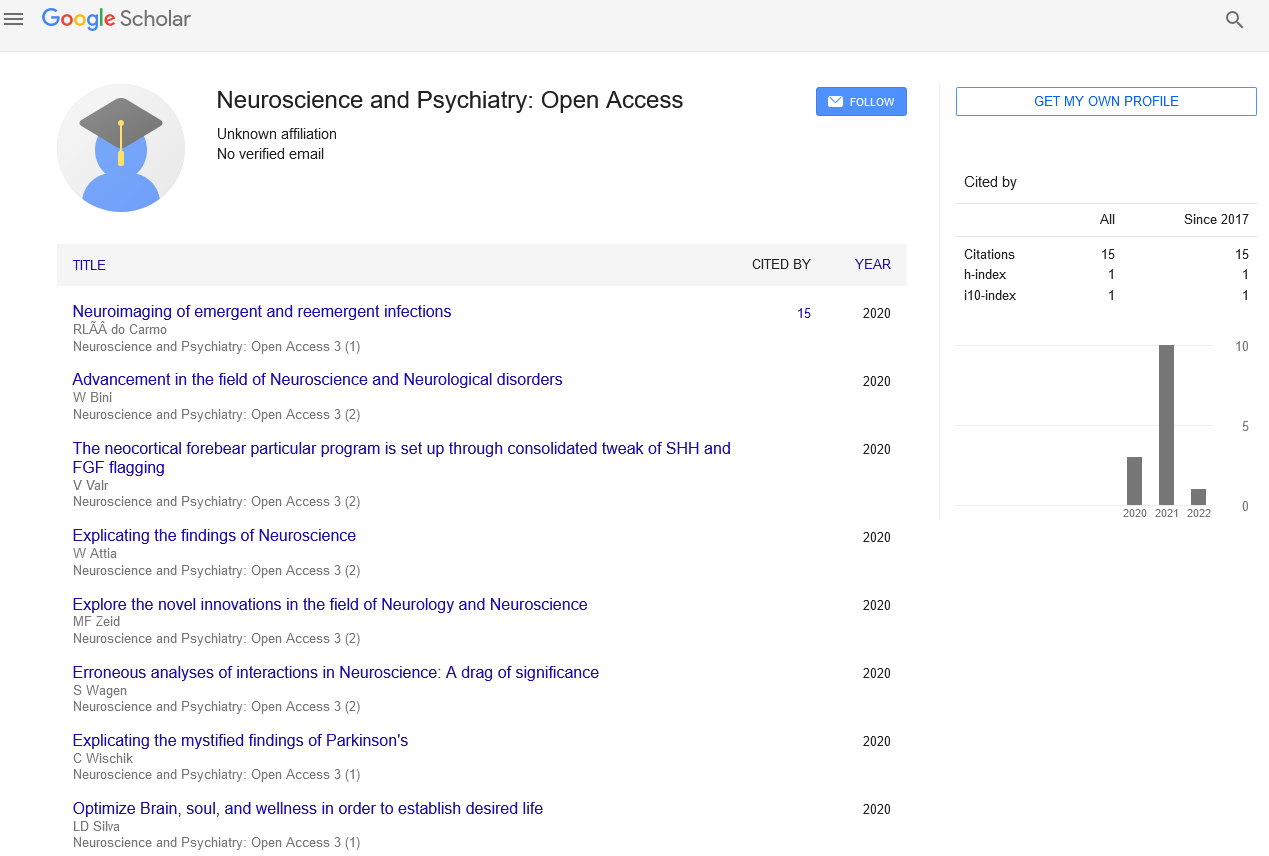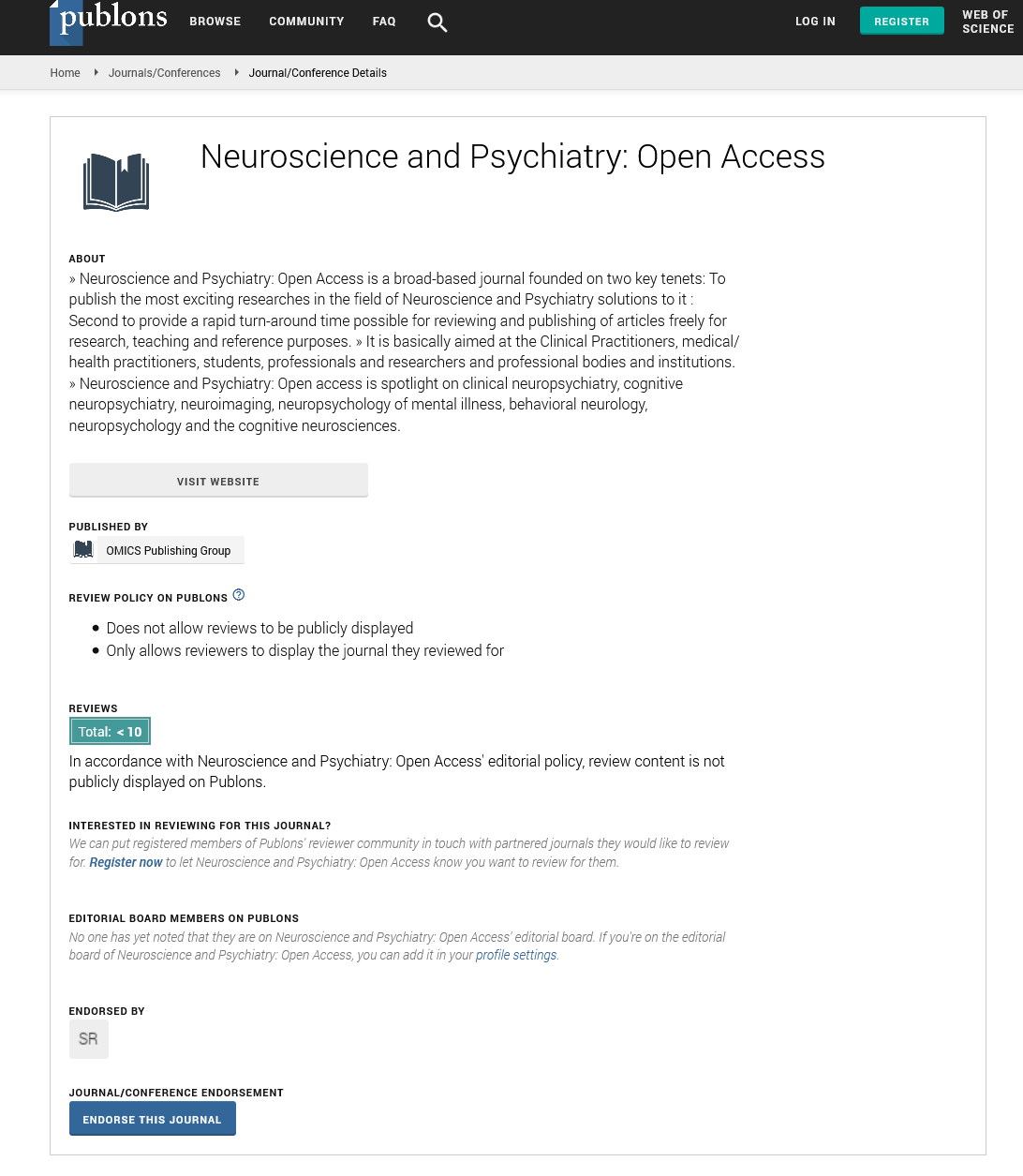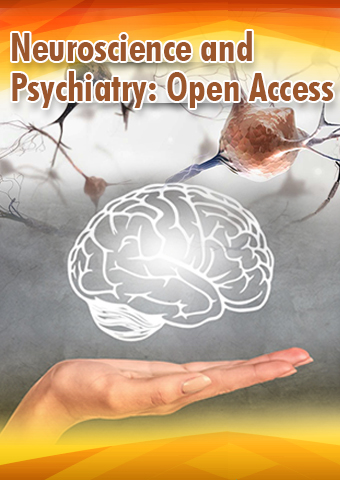Perspective - Neuroscience and Psychiatry: Open Access (2024) Volume 7, Issue 3
Unveiling the Intricacies of Neurons: The Foundation of Brain Function in Neuroscience and Psychiatry
- Corresponding Author:
- John Gore
Department of Pharmacology and Neuroscience, New York University, New York, USA
E-mail: john.gorhy1@vumc.org
Received: 20-04-2024, Manuscript No. NPOA-24-133886; Editor assigned: 24-04-2024, PreQC No. NPOA-24-133886 (PQ); Reviewed: 08-05-2024, QC No. NPOA-24-133886; Revised: 17-05-2024, Manuscript No. NPOA-24-133886 (R); Published: 24-05-2024, DOI: 10.47532/npoa.2024.7(3).224-226
Introduction
Neurons, the fundamental units of the nervous system, serve as the building blocks of brain function, orchestrating complex networks of communication that underlie cognition, emotion, behaviour, and sensory processing. In this comprehensive exploration, we delve into the intricacies of neurons, unraveling their structure, function, connectivity, role in neural circuits, and implications for understanding brain disorders within the realms of neuroscience and psychiatry.
Description
Structure of neurons: From cell body to synaptic connections
Neurons exhibit specialized morphological features that facilitate their diverse functions in information processing and transmission. The cell body, or soma, contains the nucleus, organelles, and cellular machinery necessary for metabolic activities and protein synthesis. Dendrites extend from the cell body, branching out to receive incoming signals, neurotransmitters, and synaptic inputs from other neurons.
Axons, elongated projections emanating from the cell body, transmit electrical impulses (action potentials) away from the cell body towards target cells, synapses, and neural circuits. Myelin sheaths, formed by oligodendrocytes in the Central Nervous System (CNS) and Schwann cells in the Peripheral Nervous System (PNS), insulate axons, enhance conduction speed, and facilitate efficient signal propagation.
Neuronal function: Electrical signaling and chemical communication
Neurons communicate through a combination of electrical signaling and chemical neurotransmission that governs neural activity, synaptic plasticity, and information processing within neural circuits. Resting membrane potential, maintained by ion channels and ion pumps, establishes a polarized state (-70 mV) across the neuron’s membrane, creating an electrical gradient.
Action potentials, triggered by depolarization of the membrane potential, propagate along axons in a rapid, all or none manner, mediated by voltage-gated ion channels (sodium and potassium channels). Synaptic transmission occurs at specialized junctions called synapses, where neurotransmitters released from presynaptic terminals bind to receptors on postsynaptic neurons, eliciting excitatory or inhibitory responses.
Neural circuits and connectivity: Integration of information processing
Neurons form intricate networks and circuits that integrate sensory inputs, motor outputs, cognitive functions, and emotional responses. Excitatory neurons release neurotransmitters (e.g., glutamate) that promote neuronal firing and excitation, while inhibitory neurons release neurotransmitters (e.g., GABA) that dampen neural activity and inhibit firing rates.
Neural circuits exhibit feedforward and feedback connections, hierarchical organization, and distributed processing across brain regions. Sensory processing pathways, such as the visual cortex or auditory pathway, demonstrate topographic mapping, feature detection, and hierarchical processing stages that encode sensory stimuli and environmental cues.
Neurons in neurodevelopment and neuroplasticity: Adapting to experience
Neurons play pivotal roles in neurodevelopment, learning, memory, and neuroplasticity the brain’s capacity to reorganize, adapt, and modify synaptic connections in response to experiences, environmental stimuli, and learning processes. Neurogenesis, occurring primarily in the hippocampus and olfactory bulb, generates new neurons throughout life, contributing to learning, memory consolidation, and mood regulation.
Synaptic plasticity mechanisms, such as Long-Term Potentiation (LTP) and Long-Term Depression (LTD), underlie learning and memory processes by strengthening or weakening synaptic connections based on activity patterns and synaptic input. Neurotrophic factors, including Brain-Derived Neurotrophic Factor (BDNF), support neuronal survival, synaptic plasticity, and neurogenesis, influencing cognitive functions and emotional resilience.
Neurons in brain disorders: Insights from neuroscience and psychiatry
Neurons are central to understanding brain disorders, including neurodevelopmental disorders (e.g., autism spectrum disorder), neurodegenerative diseases (e.g., Alzheimer’s disease, Parkinson’s disease), mood disorders (e.g., depression, bipolar disorder), schizophrenia, epilepsy, and neurocognitive disorders (e.g., dementia).
Neuroscientific research elucidates neuronal abnormalities, neurotransmitter imbalances, synaptic dysregulation, and circuitry disruptions underlying brain disorders. For instance, dopaminergic dysfunction in Parkinson’s disease leads to motor impairments, while amyloid-beta and tau protein accumulation in Alzheimer’s disease disrupts neuronal function and connectivity, resulting in cognitive decline.
Implications for psychiatry: Neuronal insights and therapeutic interventions
In psychiatry, understanding neuronal mechanisms informs diagnostic assessments, treatment strategies, and therapeutic interventions for mental health conditions. Psychotropic medications, such as anti-depressants, antipsychotics, anxiolytics, and mood stabilizers, modulate neurotransmitter systems, receptor activity, and synaptic transmission to alleviate symptoms and restore neural circuit balance.
Psychotherapy modalities, including Cognitive Behavioral Therapy (CBT), Dialectical Behavior Therapy (DBT), mindfulness-based interventions, and psychodynamic therapy, target neuronal plasticity, cognitive restructuring, emotion regulation, and adaptive coping strategies in psychiatric care. Brain stimulation techniques, such as Electroconvulsive Therapy (ECT), Transcranial Magnetic Stimulation (TMS), and Deep Brain Stimulation (DBS), modulate neuronal activity, normalize circuit function, and enhance treatment response in treatment-resistant cases.
Future directions in neuronal research: Precision neuroscience and translational applications
Advancements in neuroscience, genetics, neuroimaging, optogenetics, and artificial intelligence drive innovation in neuronal research, precision medicine, and translational applications for brain health and psychiatric care. Genetic studies identify risk variants, polygenic scores, and gene-environment interactions that influence neuronal function, synaptic connectivity, and vulnerability to brain disorders.
Neuroimaging technologies, such as functional MRI (fMRI), Diffusion Tensor Imaging (DTI), and Positron Emission Tomography (PET), elucidate neuronal activity patterns, structural connectivity, and neurochemical alterations in health and disease. Optogenetic tools enable precise manipulation of neuronal activity, circuit mapping, and causal inference studies that uncover neural circuit dynamics and behavioral outcomes.
Artificial Intelligence (AI) algorithms, machine learning models, and computational neuroscience simulations integrate multi-modal data, predict treatment responses, and stratify patient subgroups based on neuronal signatures, neuroimaging biomarkers, and cognitive profiles. Collaborative consortia, open science initiatives, and data sharing platforms promote data transparency, reproducibility, and knowledge dissemination, accelerating discoveries and innovations in neuronal research.
Conclusion
In conclusion, neurons orchestrate the intricate symphony of brain function, encoding sensory inputs, orchestrating motor outputs, and underpinning cognitive, emotional, and behavioral processes. From their structural complexity to their functional diversity, neurons embody the essence of neuroscience and psychiatry, offering insights into brain disorders, therapeutic interventions, and the marvels of human cognition and consciousness.
As we navigate the complexities of neurons, interdisciplinary collaborations, translational research, and technological innovations propel us towards transformative discoveries, personalized treatments, and a deeper understanding of the brain’s inner workings. Neurons serve as the linchpin in unraveling the mysteries of the mind, paving the way for a brighter future in brain health and mental well-being.


